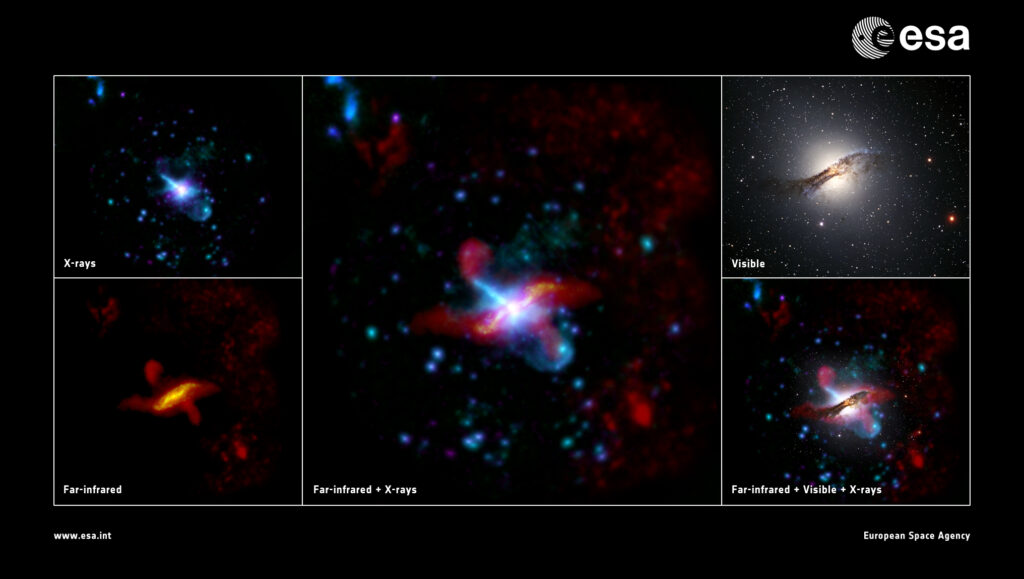Massive galaxies and a fraction of lower mass galaxies in the Local Universe host a super massive black hole in their centre. Their mass ranges between millions and tens billions solar masses. When matter from the galaxies falls into the a super massive black hole, an enormous amount of energy is released across the whole electromagnetic spectrum (emission in optical, ultra-violet and infrared light as well as in X-rays and radio wavelengths). These phenomena are well-known as Active Galactic Nuclei (AGN). In many cases, the power of a single AGN with a size that is similar to our Solar System is higher than the power emitted by the stellar population of its host galaxy.

There are many indications that the super massive black holes are connected with their host galaxies. For example, the AGN activity may stop or enhance the star formation in a galaxy. However, the physical mechanisms lying behind such a relation are not fully understood. In order to find out more about the physical properties of these objects and study their evolution across the cosmic time, large sample of AGN are required, especially back in time when the Universe was young.
One of the most efficient ways to detect AGN is through X-ray light, since X-rays are so powerful that can penetrate the dust and gas surrounding the black hole in the center of galaxies without being absorbed and reach us in Earth. However, to find how far these galaxies are deep optical data are needed (long exposure time in optical images).
A team of astronomers using sky observations in different wavelengths managed to identify a large number of active galactic nuclei when the Universe was less than two billions years old. They used X-ray observations from the XMM-Netwon space telescope to identify AGN in the XMM-XXL field, a large sky area. Then, using deep optical images from the space optical telescope Subaru they selected those AGN that lie in the Early Universe. They confirmed their results by constructing the spectral energy distributions of the sources with additional data across the whole electromagnetic spectrum (ultraviolet, optical, infrared). The spectral energy distribution is a graph of the energy emitted by an object at different wavelengths and it is very useful tool for astronomers to study the physical properties of the night sky objects.

They compared, for the first time, this large number of very luminous active galactic nuclei detected in X-rays with the expected number from the theoretical predictions at this Universe age. Their analysis agrees with some of the evolutionary models of the super-massive black holes that are similar when considering AGN detected in the optical light. They concluded that the combination of large-area X-ray surveys with deep optical data are essential to identify AGN in the Early Universe.
This work led by Dr. Ektoras Pouliasis from the National Observatory of Athens (Greece) in collaboration with astronomers all over the world was accepted for publication in Astronomy & Astrophysics with the title: “XXL-HSC: An updated catalogue of high-redshift (z>3.5) X-ray AGN in the XMM-XXL northern field. Constraints on the bright end of the soft logN-logS”. Co-authors: I. Georgantopoulos, A. Ruiz, R. Gilli, E. Koulouridis, M. Akiyama, Y. Ueda, L. Chiappetti, C. Garrel, C. Horellou, T. Nagao, S. Paltani, M. Pierre, Y. Toba and C. Vignali. A preprint of this work is available online: https://arxiv.org/pdf/2111.04659.pdf
